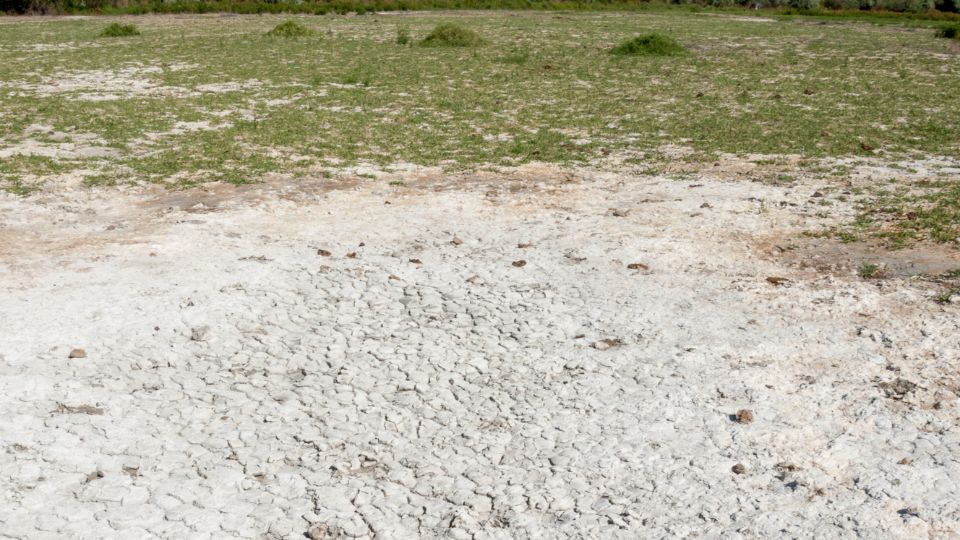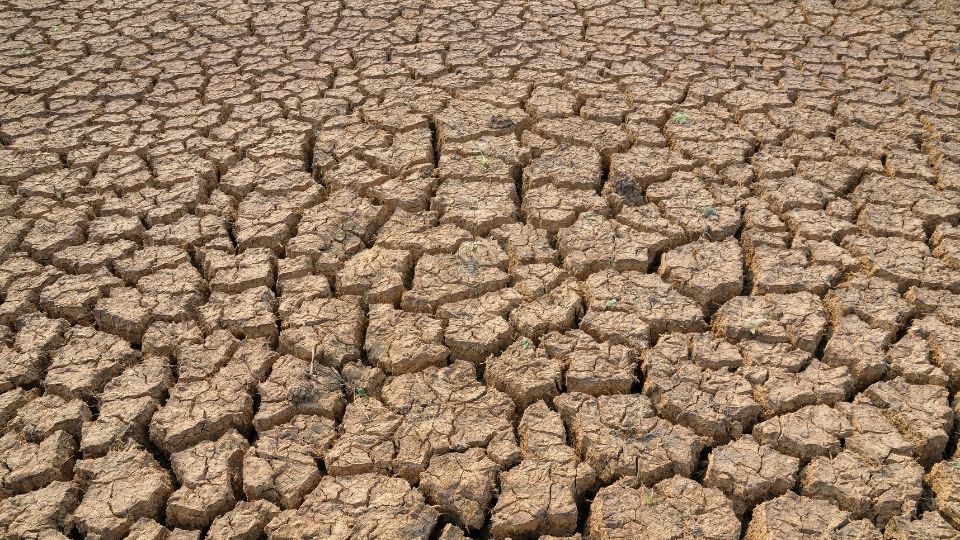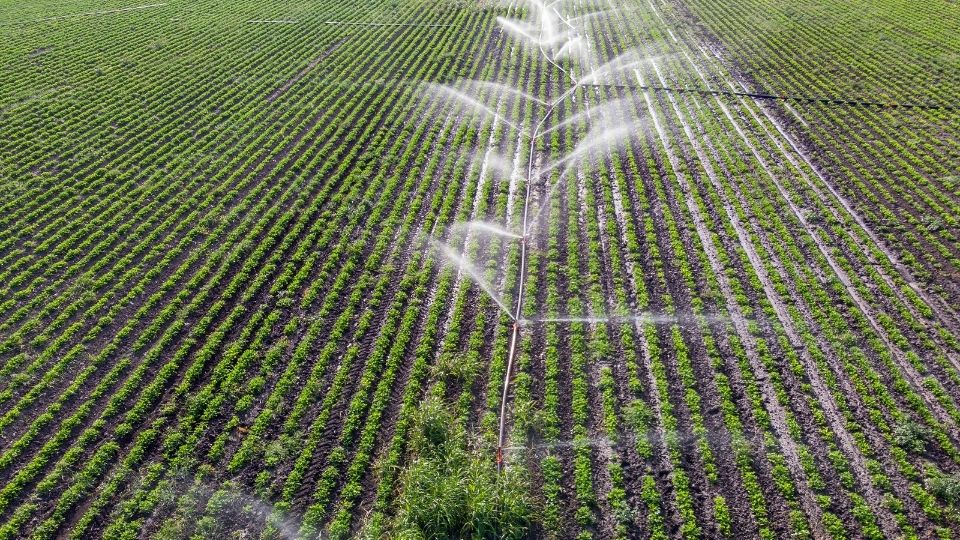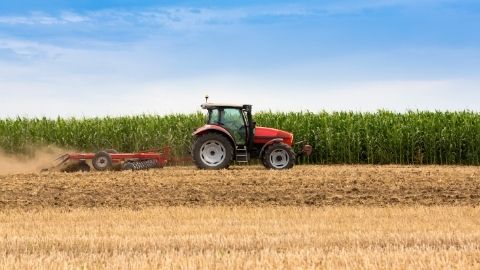Drought Tolerance Guide for Small Grains in Utah
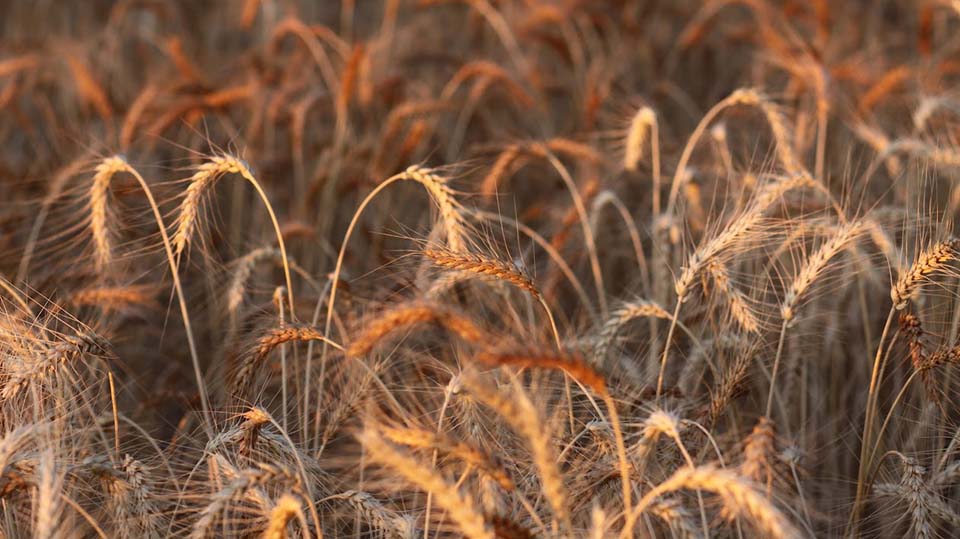
Overview
Crop variety selection is one of the most important choices on the farm. Crop genetics determine a significant portion of the yield potential and resource use efficiency. Crop types and genetics that use water more efficiently will become increasingly important as water becomes scarcer. Throughout Utah and the Western United States, water availability is decreasing due to various factors, including reduced snowpack andrapid urban growth. Alfalfa, other hay, small grains, and corn are grown on more acres than any other crops in Utah and much of the Intermountain West. These crops all have varieties, hybrids, and cultivars with the potential for more efficient water use while mitigating yield loss. Navigating these options and understanding various mechanismsand effectiveness can be a challenge. This guide will address some of the primary mechanisms, options, and effectiveness of crop genetics for improved water use efficiency.
What Is Water Use Efficiency?
As water is a limitation in crop production, the need for crops to use every applied and natural (i.e., precipitation) unit of water is a high priority. One definition of crop water use efficiency (WUE) is the biomass or grain yield produced per unit of the total water used by the crop. It is calculated as WUE = Y/ET, where Y is the crop yield, either in total harvestable biomass or marketed yield, and ET is the combined water evaporation from the soil surface and water transpired by plants (Hatfield et al., 2001).
Water use efficiency is influenced by many factors, including soil and climate conditions. Crop type, management, and genetics also heavily influence WUE. Although WUE can vary widely, commonly reported values for major grain crops range from about 275 pounds of grain per acre inch of water for corn to 500 pounds of grain per acre inch of water for wheat (Putnam et al., 2001; Sadras & Angus, 2006). Alfalfa is about 300 pounds of biomass per acre inch of water. Silage corn and small grain forages have among the highest reported WUE. Silage corn has WUE of about 910 pounds per acre inch, and wheat forage has a value of about 700 pounds of dry matter per acre inch (Nilahyane & Islam, 2018; Marsalis, 2018).
Another factor to consider when evaluating efficiency is the harvest index. The harvest index is the percentage of the above-ground biomass harvested (Putnam et al., 2001). Because the complete leaf and stem are collected, alfalfa has a harvest index of 100. This is compared to grain corn with a harvest index of 50 or wheat with an index of 45. This increases the efficiency of alfalfa because all water used in the above-ground biomass is harvested compared to grain production, where half the biomass is unharvested. For this reason, silage corn and forage grains also have a higher harvest index and WUE. Several ongoing genetic and management efforts exist to improve the water use efficiencies of these crops.
Small grains often have higher WUE than other crops due to their shorter and earlier growing season. This can be heavily influenced by the species and harvest type (forage versus grain) of various small grains. The WUE of small grains increases when the crop is harvested as a forage compared to grain because the harvested biomass is greater, and forages generally require less irrigation than grain production. Wheat harvested for grain has a WUE between 452–498 poundsper acre inch (Sadras et al., 2006) compared to an average of 702poundsof dry matter per acre inch for small grain forage (Marsalis, 2018).
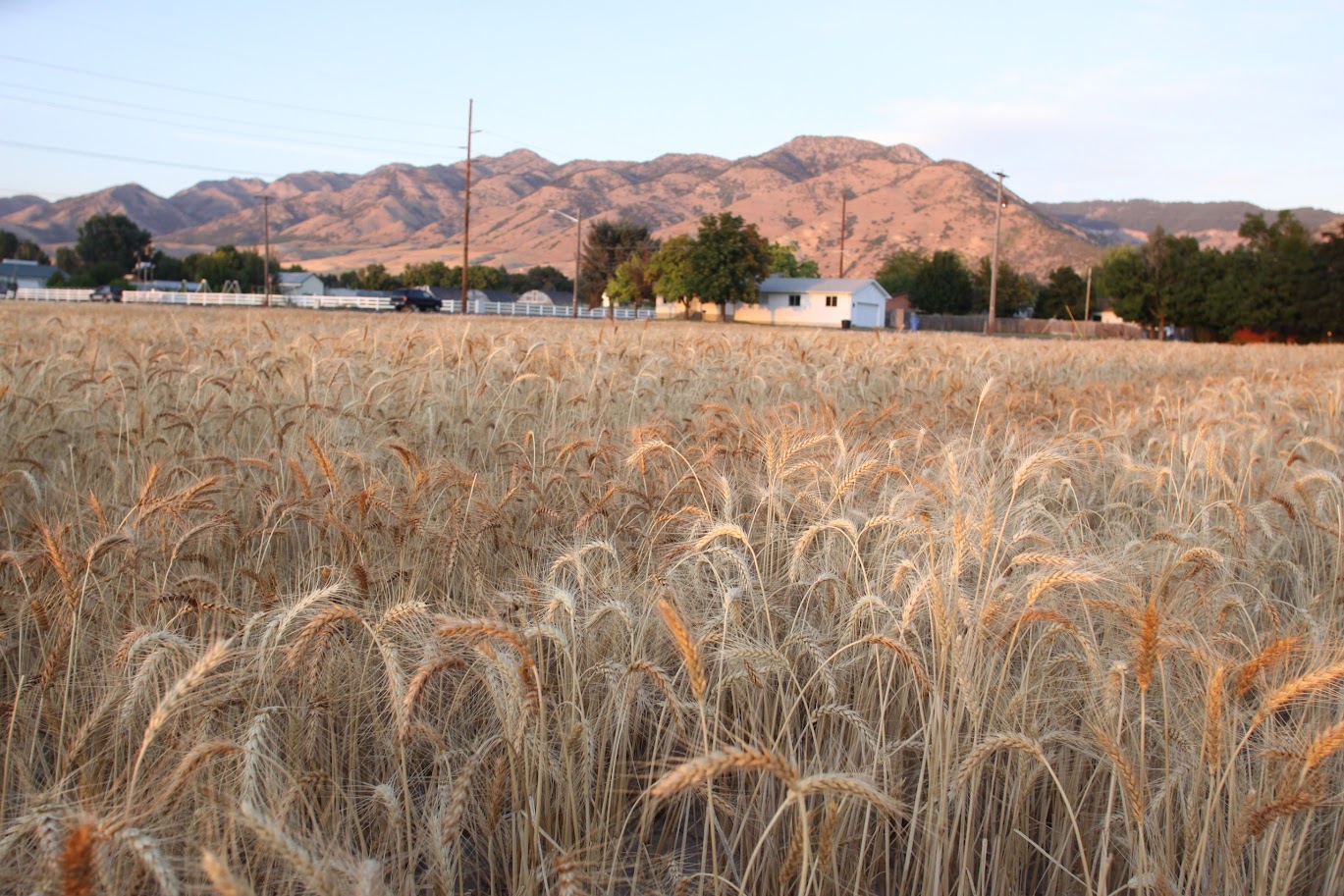
Unlike most crops, small grains are one of the few crops that can withstand dryland growing conditions. Small grains, however, can be highly affected by drought conditions, and historically,irrigation at the right levels and time has drastically improved yield. A study conducted in Western Kansas found that irrigated land yields outperformed dryland wheat by an average of 26%, depending on annual precipitation levels (Norwood, 1995). However, in New Mexico, where the average annual rainfall is much less and more similar to Utah’s rainfall, properly timed irrigation can nearly double small grain yields compared to dryland cropping (Marsalis, 2018). Lower yields in dryland wheat can lead to a higher quality crop than that of irrigated land. Drought-stressed, dryland wheat tends to have a higher protein content thanirrigated wheat (Jones & Olson-Rutz, 2020). The water use efficiency of irrigated land is also greater than that of dryland systems. A Texas study found that irrigated wheat averaged twice the WUE of dryland wheat (Musick et al., 1994).
Drought-Tolerant Varieties
Genetically modified drought-tolerant small grain varieties are not currently available on the United States market but may be on the horizon for wheat (Gupta et al., 2017). Instead, drought tolerance has been advanced using conventional breeding techniques. Wheat drought tolerance can be increased by either losing less or taking up more water (Stanfield, 2020). This occurs through managing several traits within wheat and a combination of improvements that allow for the greatest increase in resistance to drought conditions.
Crop breeding efforts for enhanced drought tolerance have included aggressive seedling establishment that decreases evaporation due to greater ground covering early in the season. Breeding for shorter plants increases the harvest index,and improved root systems increase the water uptake. More rapid maturity helps the plant to avoid terminal drought stress and increases its ability to manage evaporative losses,resulting in greater WUE (Mwadzingeni et al., 2016). Enhanced stomatal control and an increase in leaf wax reduce the plant's water loss (Stanfield, 2020).
For wheat in certain studies, increased yields during times of drought come from the increase in biomass rather than harvest index, which is a key factor in dryland wheat production, and was seen in many newer varieties (Ledbetter, 2013). However, this has also become a problem in irrigated wheat due to tall plants that result in increased lodging. Dryland varieties often do not do well in irrigated settings due to lodging unless irrigation levels are extremely low. Thus, they may only work as a drought-tolerant option where irrigation is severely restricted during drought.
Drought Trials
Utah State University has a long history of testing and developing small grain varieties. Most of these have been dryland varieties, which handle low precipitation well but have limited applicability in irrigated settings. Many studies have examined various small grain irrigation requirements or the performance of several irrigated varieties. However, few have evaluated how several small grain varieties of the sameclass and type differ in their irrigation requirements. Thus, more local research on this topic is needed and subsequently will be the focus of future research at USU.
Summary
As drought becomes more common and intense in many regions, it is essential that options for drought tolerant crop varieties be explored and considered for growing areas affected by drought. Continued research is being conducted on the performance of drought tolerant varieties and hybrids, specifically in the West.
References
- Jones, C.,& Olson-Rutz, K. (2020). Practices to increase wheat grain protein [Fact sheet]. Montana State University Extension. https://landresources.montana.edu/soilfertility/documents/PDF/pub/NWhtProtEB0206.pdf
- Gupta, P., Balyan, H., & Gahlaut, V. (2017). QTL Analysis for drought tolerance in wheat: Present status and future possibilities. Agronomy, 7(5). https://www.mdpi.com/2073-4395/7/1/5
- Ledbetter, K. (2013). High yield, water efficiency of drought tolerant wheat due to higher biomass. Texas A&M University, Phys. org. https://phys.org/news/2013-12-high-yield-efficiency-drought-tolerant.html
- Marsalis, M. (2018). Small grain forages for New Mexico [Fact sheet]. New Mexico State University. https://aces.nmsu.edu/pubs/_circulars/CR630/welcome.html
- Musick, J., Jones, O., Stewart, B., & Dusek, D. (1994). Water yield relationships for irrigated and dryland wheat in the U. S. southern plains. Agronomy Journal, 86, 980–986. https://acsess.onlinelibrary.wiley.com/doi/abs/10.2134/agronj1994.00021962008600060010x
- Mwadzingeni, L., Shimelis, H., Dube, E., Laing, M., & Tsilo, T. (2016). Breeding wheat for drought tolerance: Progress and technologies. Journal of Integrative Agriculture, 15, 935–943. https://www.sciencedirect.com/science/article/pii/S2095311915611029
- Norwood, C. (1995). Comparison of limited irrigated vs. dryland cropping systems in the U. S. great plains. Agronomy Journal, 87, 737–743. https://acsess.onlinelibrary.wiley.com/doi/10.2134/agronj1995.00021962008700040021x
- Sadras, V., & Angus, J. (2006). Benchmarking water-use efficiency of rainfed wheat in dry environments. Australian Journal of Agriculture Research, 57, 847–856. DOI:10.1071/AR05359
- Stanfield, C. (2020). What makes a drought resistant wheat work? Sask Wheat. https://saskwheat.ca/news-articles/drought-tolerant-wheat-2020
Published August 2022
Utah State University Extension
Peer-reviewed fact sheet
Authors
Matt Yost, Tina Sullivan, Dakota Boren, LuRee Johnson, Melanie Mills, Earl Creech, Boyd Kitchen, and Randall Violett
Related Research















